 by our College Data Analytics Team
by our College Data Analytics TeamUVF total enrollment is approximately 557 students. 396 are undergraduates and 2 are graduate students.
Male/Female Breakdown of Undergraduates
The full-time UVF undergraduate population is made up of 53% women, and 47% men.
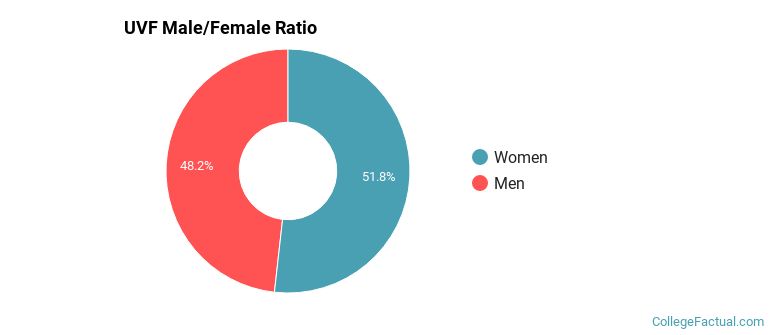
For the gender breakdown for all students, go here.
UVF Racial/Ethnic Breakdown of Undergraduates
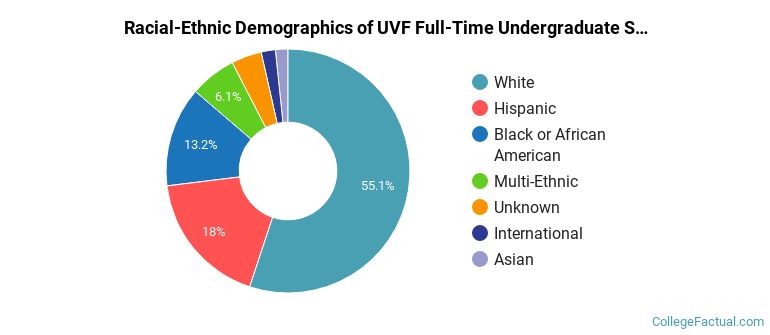
| Race/Ethnicity | Number |
|---|---|
| White | 199 |
| Hispanic | 78 |
| Black or African American | 64 |
| Multi-Ethnic | 22 |
| Unknown | 17 |
| Asian | 10 |
| International | 5 |
| Native Hawaiian or Pacific Islander | 0 |
See racial/ethnic breakdown for all students.
Male/Female Breakdown of Graduate Students
About 50% of full-time grad students are women, and 50% men.

For the gender breakdown for all students, go here.
UVF Racial-Ethnic Breakdown of Graduate Students

| Race/Ethnicity | Number |
|---|---|
| White | 1 |
| Unknown | 1 |
| Asian | 0 |
| Black or African American | 0 |
| Hispanic | 0 |
| Native Hawaiian or Pacific Islander | 0 |
| International | 0 |
| Multi-Ethnic | 0 |
See racial/ethnic breakdown for all students.
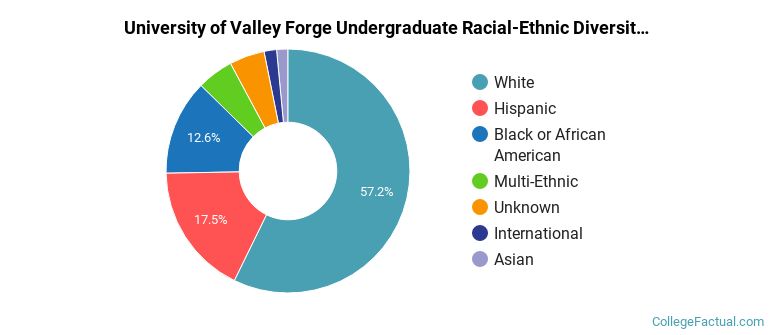
| Race/Ethnicity | Number |
|---|---|
| White | 291 |
| Hispanic | 108 |
| Black or African American | 78 |
| Unknown | 29 |
| Multi-Ethnic | 27 |
| Asian | 15 |
| International | 7 |
| Native Hawaiian or Pacific Islander | 0 |
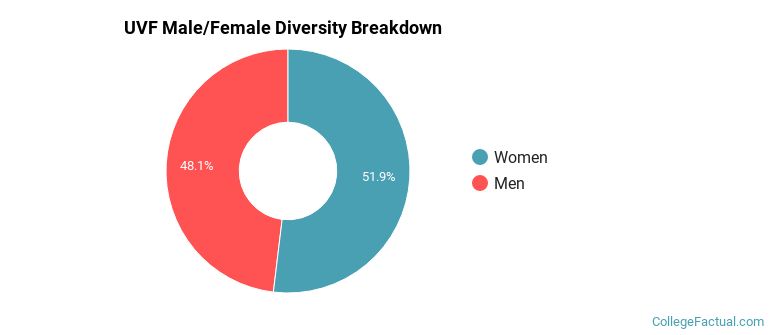
There are approximately 287 female students and 270 male students at UVF.
UVF ranks 638 out of 2,183 when it comes to geographic diversity.
59.42% of UVF students come from out of state, and 0% come from out of the country.
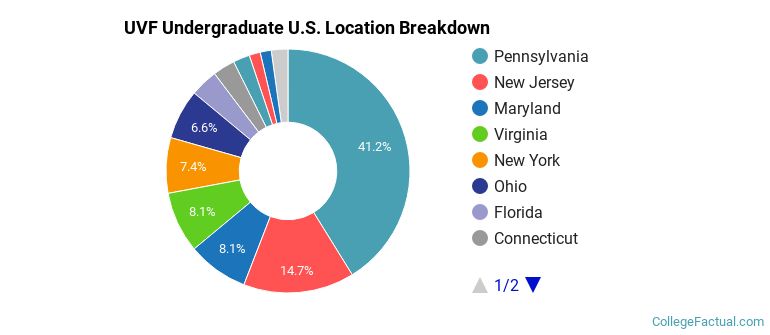
The undergraduate student body is split among 14 states (may include Washington D.C.). Click on the map for more detail.
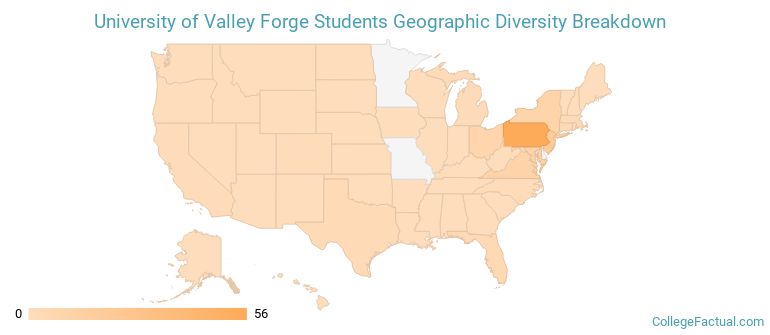
| State | Amount |
|---|---|
| Pennsylvania | 56 |
| New Jersey | 20 |
| Maryland | 11 |
| Virginia | 11 |
| New York | 10 |
Students from 3 countries are represented at this school, with the majority of the international students coming from India, Jamaica, and Dominican Republic.
Learn more about international students at UVF.
A traditional college student is defined as being between the ages of 18-21. At UVF, 56.81% of students fall into that category, compared to the national average of 60%.
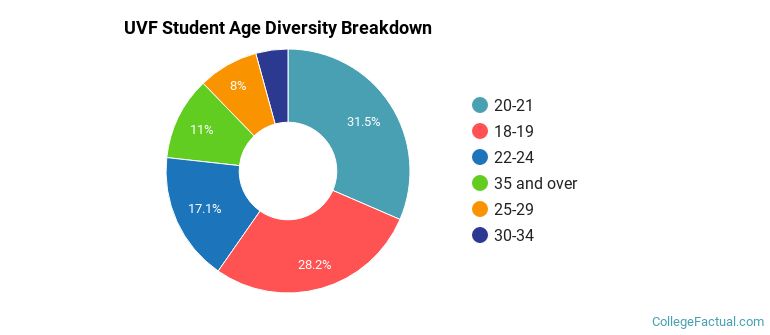
| Student Age Group | Amount |
|---|---|
| 20-21 | 229 |
| 18-19 | 205 |
| 22-24 | 124 |
| 35 and over | 80 |
| 25-29 | 58 |
| 30-34 | 31 |
| Under 18 | 0 |
Footnotes
*The racial-ethnic minorities count is calculated by taking the total number of students and subtracting white students, international students, and students whose race/ethnicity was unknown. This number is then divided by the total number of students at the school to obtain the racial-ethnic minorities percentage.
References